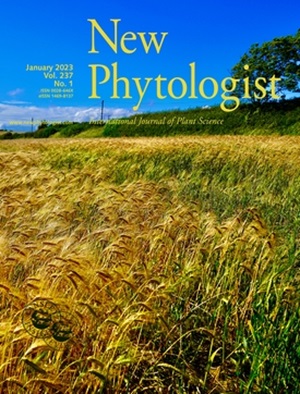The antisense CircRNA VvcircABH controls salt tolerance and the brassinosteroid signaling response by suppressing cognate mRNA splicing in grape
IF 8.3
1区 生物学
Q1 PLANT SCIENCES
引用次数: 0
Abstract
- Soil salinization is a major factor limiting the sustainable development of the grape industry. Circular RNAs (circRNAs) are more stable than linear mRNAs and are involved in stress responses. However, the biological functions and molecular mechanisms underlying antisense circRNAs in plants remain unclear.
- We identified the antisense circRNA VvcircABH through high-throughput sequencing. Using genetic transformation methods and molecular biological techniques, we analyzed the effects of VvcircABH on the response to salt stress and the mechanisms underlying its effects.
- VvcircABH was located in the nucleus and upregulated by salt stress, while the expression level of its cognate gene VvABH (alpha/beta-hydrolase) was downregulated. VvcircABH overexpression or VvABH silencing greatly enhanced grape salt tolerance. VvcircABH could bind to the overlapping region and inhibits VvABH pre-mRNA splicing, thereby decreasing the expression level of VvABH. Additionally, VvcircABH repressed the additive effect of VvABH on the interaction between VvBRI1 (brassinosteroid-insensitive 1) and VvBKI1 (BRI1 kinase inhibitor 1), thus influencing the plant's response to BR, which plays important roles in plant salt tolerance.
- We conclude that VvcircABH and VvABH play distinct roles in the salt tolerance and brassinosteroid signaling response, and VvcircABH could govern the expression of VvABH by inhibiting its splicing.
反义CircRNA VvcircABH通过抑制葡萄同源mRNA剪接来控制耐盐性和油菜素内酯信号反应
土壤盐碱化是制约葡萄产业可持续发展的重要因素。环状rna (circRNAs)比线性mrna更稳定,并参与应激反应。然而,反义环状rna在植物中的生物学功能和分子机制尚不清楚。我们通过高通量测序鉴定了反义circRNA VvcircABH。利用遗传转化方法和分子生物学技术,分析了VvcircABH对盐胁迫响应的影响及其作用机制。VvcircABH位于细胞核中,在盐胁迫下表达上调,而其同源基因VvABH (α / β -水解酶)表达下调。VvcircABH过表达或沉默均能显著增强葡萄的耐盐性。VvcircABH可以结合到重叠区域,抑制VvABH pre-mRNA剪接,从而降低VvABH的表达水平。此外,VvcircABH抑制了VvABH对油菜素类固醇不敏感1 (VvBRI1)和BRI1激酶抑制剂1 (VvBKI1)相互作用的加性效应,从而影响了植物对BR的反应,在植物耐盐性中起重要作用。我们认为,VvcircABH和VvABH在盐耐受性和油菜素内酯信号应答中发挥着不同的作用,并且VvcircABH可能通过抑制VvABH的剪接来调控其表达。
本文章由计算机程序翻译,如有差异,请以英文原文为准。
求助全文
约1分钟内获得全文
求助全文
来源期刊

New Phytologist
生物-植物科学
自引率
5.30%
发文量
728
期刊介绍:
New Phytologist is an international electronic journal published 24 times a year. It is owned by the New Phytologist Foundation, a non-profit-making charitable organization dedicated to promoting plant science. The journal publishes excellent, novel, rigorous, and timely research and scholarship in plant science and its applications. The articles cover topics in five sections: Physiology & Development, Environment, Interaction, Evolution, and Transformative Plant Biotechnology. These sections encompass intracellular processes, global environmental change, and encourage cross-disciplinary approaches. The journal recognizes the use of techniques from molecular and cell biology, functional genomics, modeling, and system-based approaches in plant science. Abstracting and Indexing Information for New Phytologist includes Academic Search, AgBiotech News & Information, Agroforestry Abstracts, Biochemistry & Biophysics Citation Index, Botanical Pesticides, CAB Abstracts®, Environment Index, Global Health, and Plant Breeding Abstracts, and others.
 求助内容:
求助内容: 应助结果提醒方式:
应助结果提醒方式:


